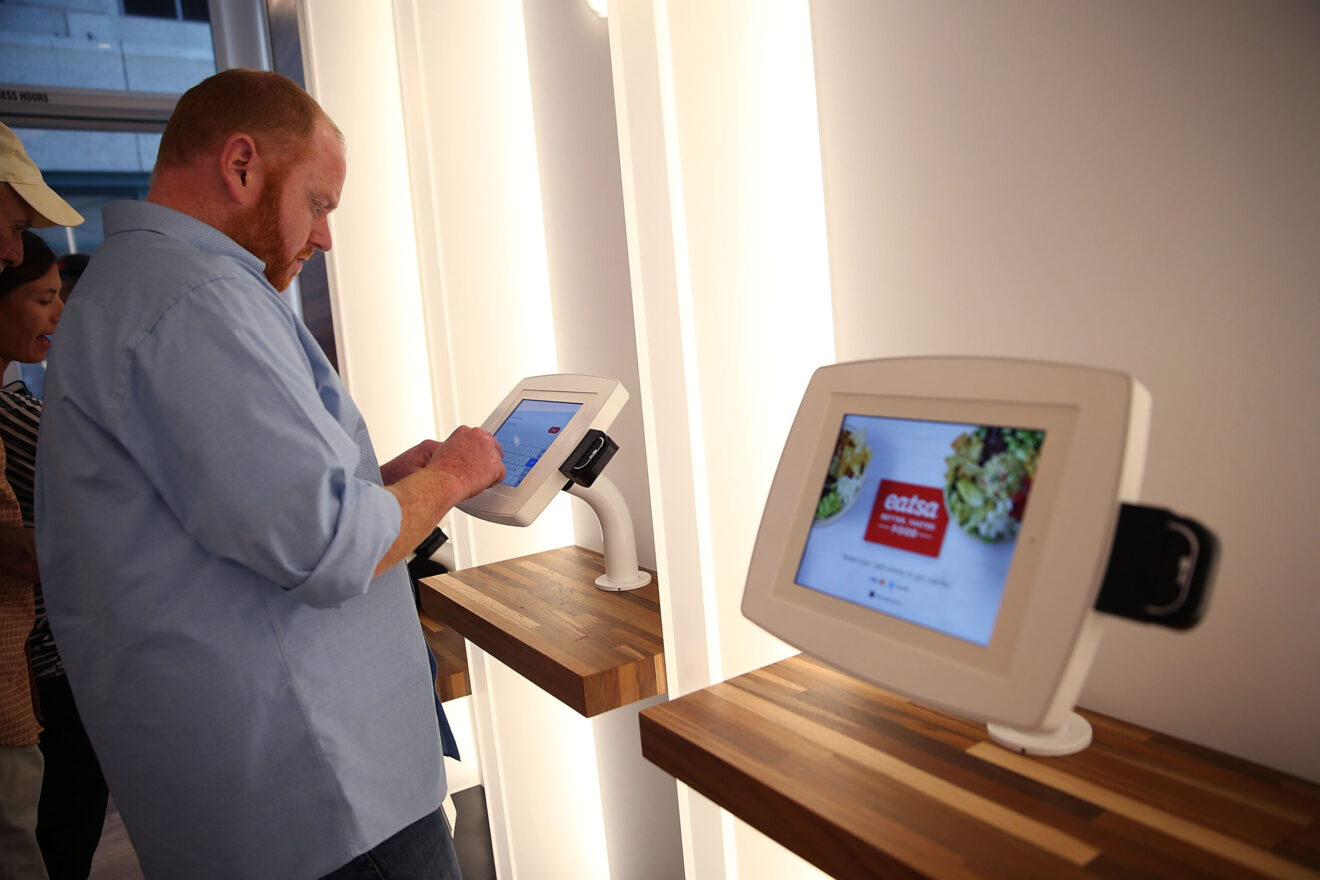As eateries clamor to add new tech features, self-serve kiosks and tabletop tablets are popping up in more restaurants, from quickserve to fine dining. Kiosks offer many benefits and opportunities, but the technology also presents hurdles and questions. A panel at the National Restaurant Association’s Restaurant Innovation Summit in Dallas, Texas, last week discussed how restaurants can ensure their investment in kiosks pays off and how the technology may evolve.
The main point to which all the panelists kept returning is that screens shouldn’t replace human interactions in restaurants. “From our perspective, it is very much about enhancing the guest experience by enhancing the servers’ ability to serve them,” said Barry Schliesmann, chief product officer at Ziosk.
Ziosk provides tabletop tablets mainly to casual dining restaurants, where they serve as an additional information source and ordering platform in addition to a server. Customers place their main orders with a waiter or waitress, but having a tabletop screen allows them to reorder drinks or add a dessert without waiting.
At quickserve and fast-casual eateries, kiosks can take care of an order from start to finish, but it’s still smart to have staff members on hand to help out. Having employees walk diners through the ordering process is especially important after first introducing kiosks, said Eric Bengston, senior manager at Deloitte Digital. Bengston is working with Taco Bell to design its kiosks, which the chain plans to roll out to all its restaurants in 2019.
Making sure customers have a good understanding of how the kiosk ordering system works is key to unlocking one of the major opportunities they present — upselling and cross-selling. Diners are more likely to opt for customizations when ordering via kiosk, and these add-ons can boost checks by as much as 30%.
“By increasing the check size, that is what is able to pay for the technology and pay for the implementation of it. So without that, it would not be a success,” Bengston said.
In addition to promoting menu options and meal add-ons such as drinks and desserts, kiosks can also help restaurants boost awareness and promote causes. Taco Bell’s kiosks include an option to donate to the Taco Bell Foundation, which is something staff members may forget to mention, Bengston said.
Including these types of brand-specific features also serves to give the kiosk experience some personality, which is key to maintaining brand loyalty as restaurants integrate kiosks. “One thing that irks me is when the experience is not branded,” said Jeff Spitulnik, vice president of products, marketing and design at Eatsa, which began as a restaurant concept before pivoting to become a technology provider. “There has to be a distinct personality to differentiate yourself from your competitors. Technology can normalize that in really hideous ways.”
Another common pitfall restaurants make when integrating kiosks is failing to keep the screens clean, Bengston said. He cautioned operators to be mindful of fingerprints and other smudges on the screens, which customers touch right before eating.
As kiosk technology evolves, the amount that customers need to actually touch the screen may decline. Novo Labs CEO and co-founder Clinton Coleman founded the company to help bring voice capabilities into the digital world, including kiosks. “We all know how to order by voice. It’s the most comfortable, most natural way to express what we want,” he said.
“Voice will still be an important part of the user experience…but the technology is just now getting to the point where you can deploy it in automated services.”
Regardless of the advances in technology, the panelists agreed that the human touch will remain a selling point of the restaurant experience.
“Automation and technology and robotics is designed to help us do things better, not replace us,” Spitulnik said. “I think we’re a long, long way away from having robots replace people in a way that doesn’t also benefit us.”
______________________________________________________________________________________________________________________
If you enjoyed this article, sign up for Restaurant Smartbrief or ProChef Smartbrief, or check out all of SmartBrief’s food and travel newsletters as we offer more than 30 newsletters covering the food and travel industries from restaurants, food retail and food manufacturing to business travel, the airline and hotel industries and gaming.
